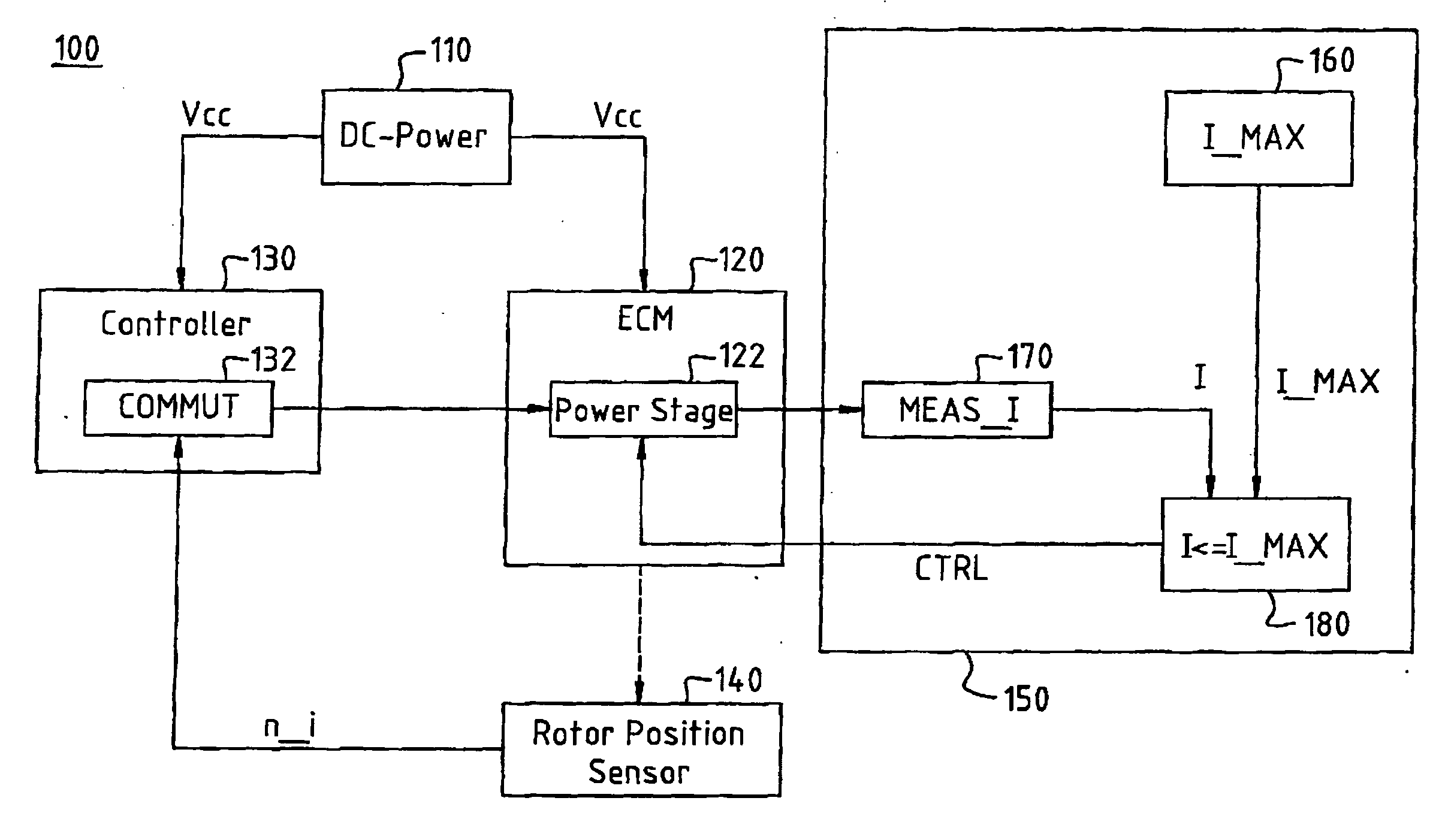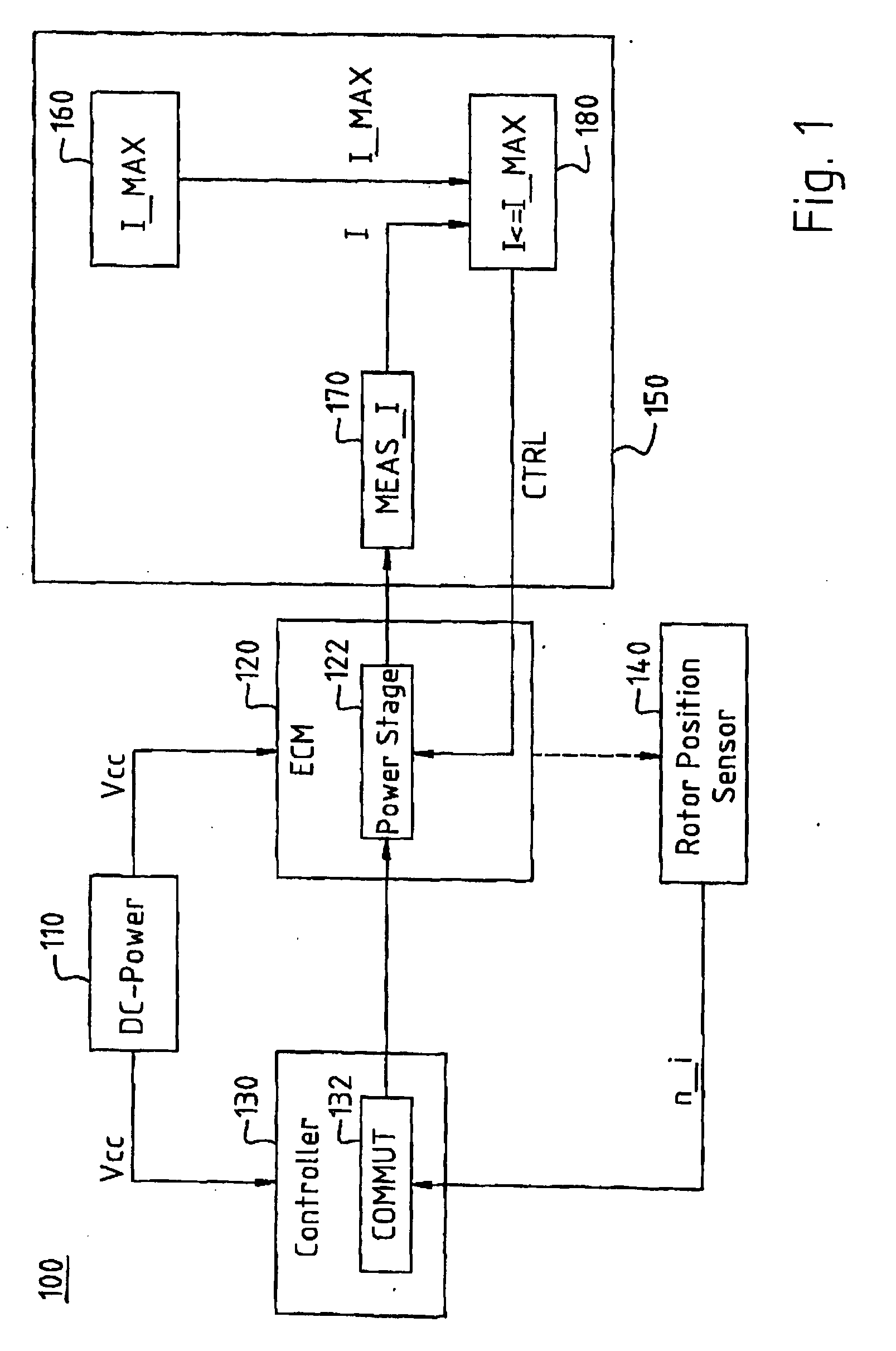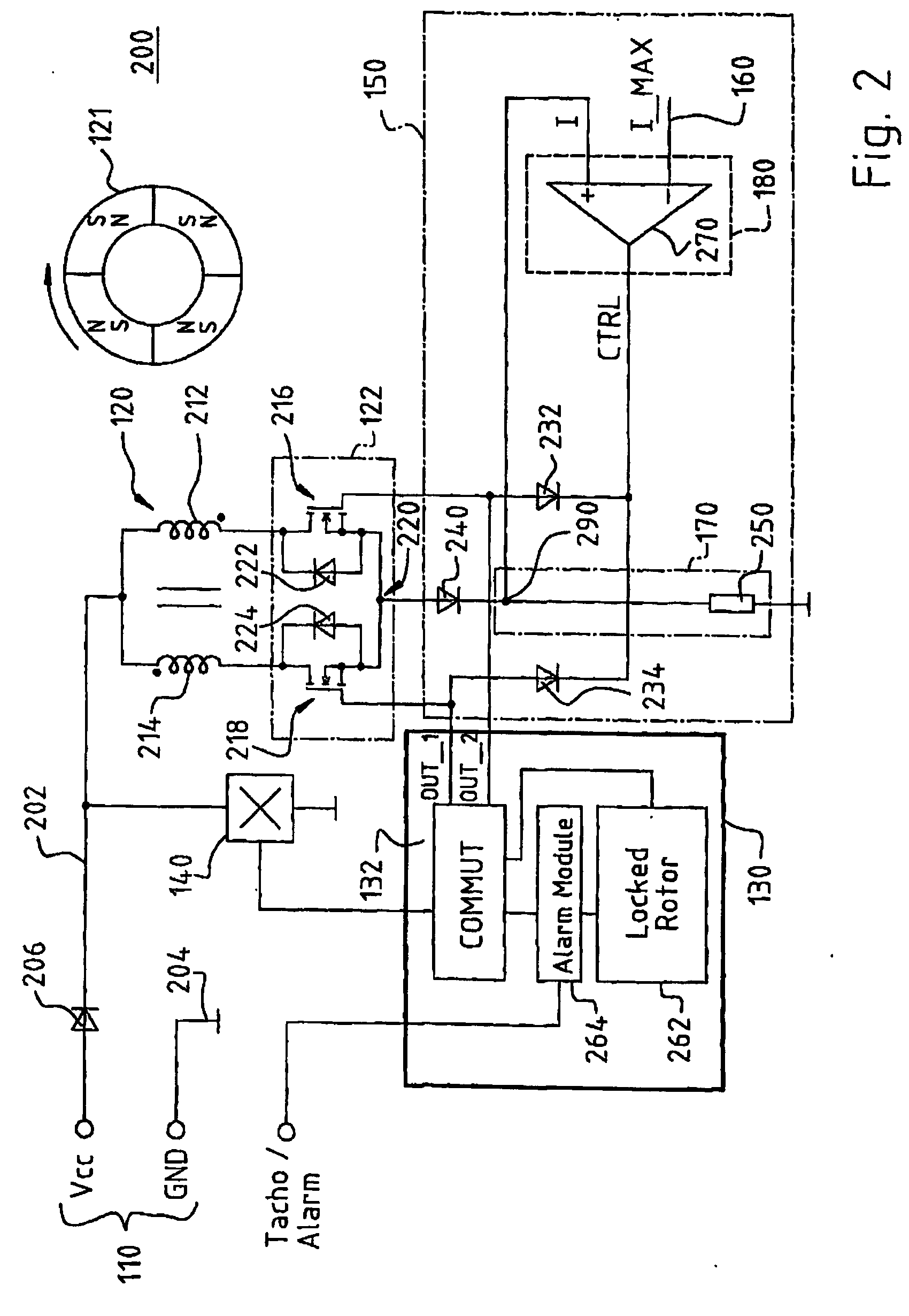Control Circuit for an Electronically Commutated Motor
a control circuit and electronic commutation technology, applied in the direction of single motor speed/torque control, synchronous motor starter, ac motor stopper, etc., can solve the problems of increasing the load, increasing the service life of electrolytic capacitors, and generally only having a limited service life, so as to reduce the possibility of unpleasant solid-borne sound, simple and inexpensive control circuit, and increasing load
- Summary
- Abstract
- Description
- Claims
- Application Information
AI Technical Summary
Benefits of technology
Problems solved by technology
Method used
Image
Examples
first embodiment
[0020]FIG. 2 shows a simplified circuit diagram of an exemplifying circuit 200 with which apparatus 100 for operating ECM 120 of FIG. 1 is realized in accordance with a The exemplifying circuit 200 accordingly encompasses a plurality of components that make up DC voltage source 110; ECM 120 having power stage 122 and having the at least one associated Hall sensor 140; controller 130 having commutation controller 132; and control circuit 150 having motor current limit value generator 160, current measuring element 170, and motor current setting element 180.
[0021]In the exemplifying circuit 200, DC voltage source 110 encompasses a positive pole Vcc that is connected to a positive lead 202, and a negative pole GND that is connected to a negative lead 204. Positive pole Vcc is connected via positive lead 202 to the anode side of a rectifier diode 206. The cathode side of rectifier diode 206 is connected on the one hand via the at least one Hall sensor 140 to ground, and on the other ha...
second embodiment
[0031]FIG. 3 is a simplified circuit diagram of an exemplifying circuit 300 with which apparatus 100 for operating ECM 120 of FIG. 1 is implemented in accordance with a The exemplifying circuit 300 accordingly also encompasses a plurality of components that make up DC voltage source 110; ECM 120 having power stage 122 and having the at least one associated Hall sensor 140; controller 130 having commutation controller 132; and control circuit 150 having motor current limit value generator 160, current measuring element 170, and motor current setting element 180. Components used here that are identical, or function identically, to ones in FIG. 2 are labeled with the same reference characters and are not explained again.
[0032]In the exemplifying circuit 300, positive lead 202 between the Vcc terminal and motor strand 214 is connected to ground (GND) via a link circuit capacitor 301. The gate and drain regions of MOSFET 216 are connected to one another via a series circuit made up of a...
PUM
 Login to View More
Login to View More Abstract
Description
Claims
Application Information
 Login to View More
Login to View More - R&D
- Intellectual Property
- Life Sciences
- Materials
- Tech Scout
- Unparalleled Data Quality
- Higher Quality Content
- 60% Fewer Hallucinations
Browse by: Latest US Patents, China's latest patents, Technical Efficacy Thesaurus, Application Domain, Technology Topic, Popular Technical Reports.
© 2025 PatSnap. All rights reserved.Legal|Privacy policy|Modern Slavery Act Transparency Statement|Sitemap|About US| Contact US: help@patsnap.com



